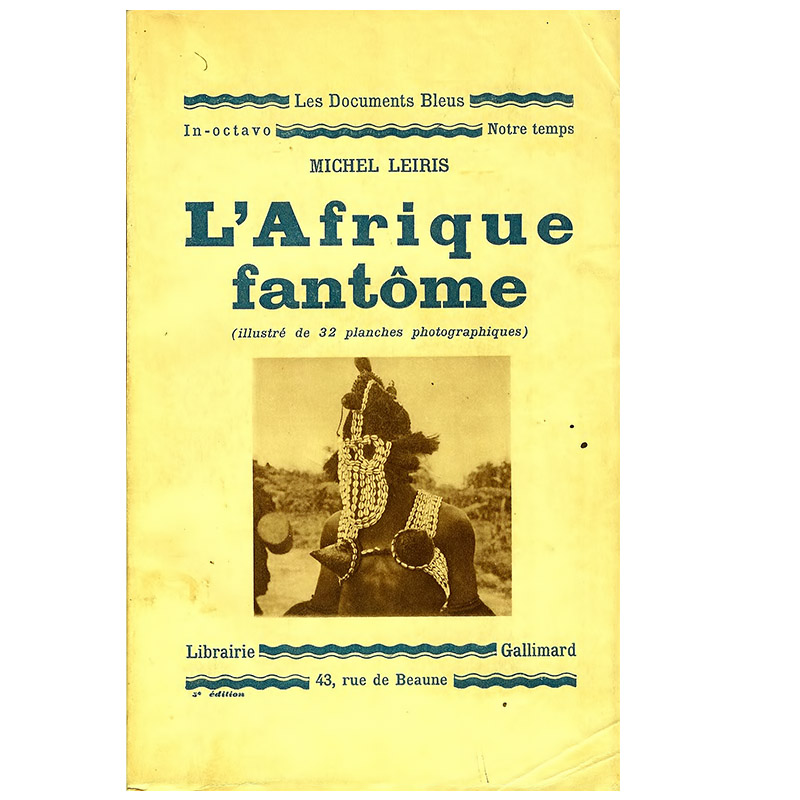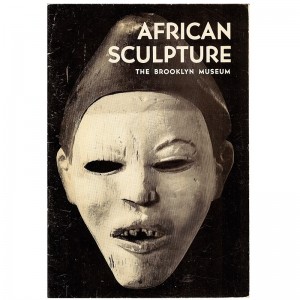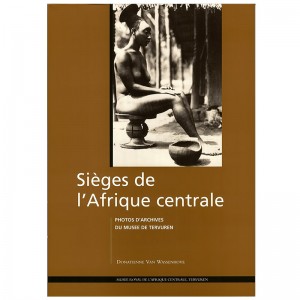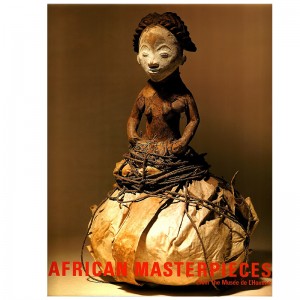L’AFRIQUE FANTÔME
Subtitle: (From Dakar to Djibouti, 1931-1933)
Author: M. LEIRIS
Material Type: general or thematic Work
Publisher: Librairie Gallimard NRF, Blue documents, Paris, 1934. Paperback, 8vo, size: 14.4 x 22.7 cm
Content: 530 p, 1 map, 32 photographic prints out text of the Dakar-Djibouti mission.
Additional information: original edition, printed, completed in January 1934 (with the fictional reference to “third edition” in the year of publication). This first edition of 1934 was condemned to destruction and pounded by decree of 17 October 1941 under the Vichy regime. What makes this edition a historical book!
Book intimate road ethnographic Dakar-Djibouti mission that crossed Africa from west to east from May 1931 to February 1933. depleted book, now rare and highly sought after by collectors and Surrealists.
State of the work: Very good condition
Description
With the support of Georges Henri Rivière, Deputy Director of the Trocadero Ethnography Museum since 1929, Leiris was officially hired in January 1931 by Marcel Griaule as a man of letters and a student of ethnology making recording secretary function ethnographic Mission “Mission Dakar-Djibouti“. Although he did not have an ethnologist training, the interest he showed in his collaboration with the magazine Documents for relations between the social sciences and Marxism is worth it to have been chosen for this shipping, a place in it, as Luis Bunuel was despised, remaining available. Michel Leiris takes the logbook of the mission, published under the title of “Phantom Africa”, the tone is more personal and intimate.
The mission includes, in 1931, six people: Marcel Griaule (Head of Mission), Marcel Larget, naturalist, responsible stewardship and second of the mission, Leiris, Eric Lutten (technology surveys and making of cinematographic view ), Jean Mouchet (language studies) and John Mitten (ethnographic surveys). Later, André Schaeffner (musicologist), Abel Faivre (geographer and naturalist), Deborah Lifshitz (1907-1943), linguist, and Gaston-Louis Roux, recruited on the recommendation of Leiris as “official painter of the Mission” responsible for study and collect ancient Ethiopian paintings and to run copies. To these people, it is essential to add Abba Gabra mussie Jerome, a large Ethiopian scholar who will be both performer and key informant Leiris in Gondar.
Back in Paris, he struggles to readjust to life in Paris. He still lives – with his wife – with her mother, Wilhelm Street.
He began to study ethnology following the course of Marcel Mauss at the Institute of Ethnology and takes the responsibility of the Department of Black Africa the Trocadero Museum of Ethnography (ancestor of the Museum of Man).
It is a trait, like Paul Nizan (Aden in Arabia), on the journey as escape mode, by signing “Phantom Africa” monumental travel diary in which he diverts investigative techniques and ethnographic for transcription apply to the description of everyday life and working conditions of the research team. The publication of the text in the collection “The blue papers” by Gallimard in 1934 caused the break with Marcel Griaule fearing that the revelation of the brutal methods used for the collection of certain sacred objects affects the reputation of ethnographers.
= These notes – taken during the ethnographic and linguistic expedition led by Marcel Griaule from Dakar to Djibouti and published almost without revision – not a history of the mission. Simple diary. “We found that in many places I show myself especially, grief, difficult, partial – even unfair –, inhuman (or” too human “), ungrateful brother wrong, what do I know?. My ambition has been, day by day, to describe this journey as I saw myself as I am … “[Michel Leiris said.]
Far from the exotic poetry to which one might expect then from Leiris, “Phantom Africa” is a newspaper which he held from 1931 to 1933, while he was participating in amateur ethnographic and linguistic Mission between Dakar and Djibouti. These “impressionist” rating is a subjective paper on black Africa before the war and the state of colonization which Leiris denounces the worst abuses. Such subjectivity violated the colonial policy of France, and that is why the first edition was shelled by decree of 17 October 1941 and Leiris explains in the preface to the second edition. As written by Michel Waldberg (in Paths of surrealism) Leiris belonged to the first surrealist meeting in 1925. Maurice Henry, painter, designer, builder object, returned later in the group (1933) after conducting the review “para-surrealist” The Great Game with Daumal, Gilbert-Lecomte and Sima. Henry will give in 1958 a collection of drawings, prefaced by Queneau, and caricatures of writers of the time: Leiris is obviously part of this beautiful gallery; there is shown sitting in the African jungle, an open heart. That’s drawing Leiris alludes in his dedication.
Additional information
| Weight | 1010 g |
|---|---|
| Dimensions | 14.4 × 22.7 cm |
Related Products
-
AFRICAN SCULPTURE
20,00 €Subtitle: The Brooklyn Mueum Authors: F. TENENBAUM / E. BRYANT Material Type: general or thematic Work Publisher: The Brooklyn Museum, New York, 1957/1958. Stapled, in-8, size: 15 x 22 cm Content: 24 p, 17 ill. b / w, 1 cards, table of figures Additional information: limited release, exhausted and rare work State of the book:…
-
AFRIKANISCHE KUNST
50,00 €Subtitle: aus Kölner Privatsammlungen Authors: W. Schmalenbach / KORINTHENBERG G. Material Type: Exhibition Catalogue. 35th Art Fair in West Germany, Cologne: 2004 Publisher: Koelnmesse GmbH, Cologne, 2004. Bound with black draped editor binding with title in white engraved recessed under jacket illustrated color new, in-4, size: 21.5 x 30.5 cm, ISBN 3-00-013510 -3 Content: 96…
-
SIEGES DE L’AFRIQUE CENTRALE
30,00 €Subtitle: Archive Photos of Tervuren Museum Author: D. VAN WASSENHOVE Material Type: Exhibition Catalogue. Royal Museum for Central Africa in Tervuren: May to October 1996 Publisher: Royal Museum for Central Africa, Annals Humanities, Tervuren (Belgium), 1996. Paperback, 4to Content: 96 percent, 67 b / w photos, 6 pl.n / b, 1 cards, biblio.. Additional information:…
-
AFRICAN MASTERPIECES
25,00 €Subtitle: From The Museum of Man Authors: S. VOGEL / N'DIAYE F. Material Type: general or thematic Work Publisher: The Center for African Art, New York, 1985. Hardcover with red canvas binding editor, under jacket illustrated in very good condition color, size: 24 x 28.6 cm, ISBN 0-8109-1825-0 Content:. 168 pp, 76 ill. b /…
325,00 €
1 in stock








